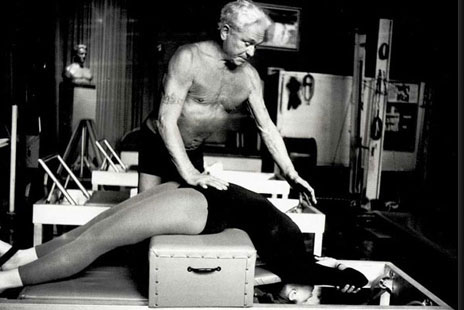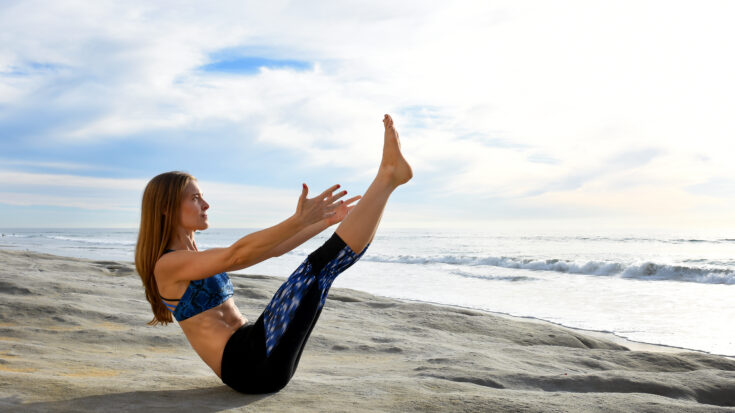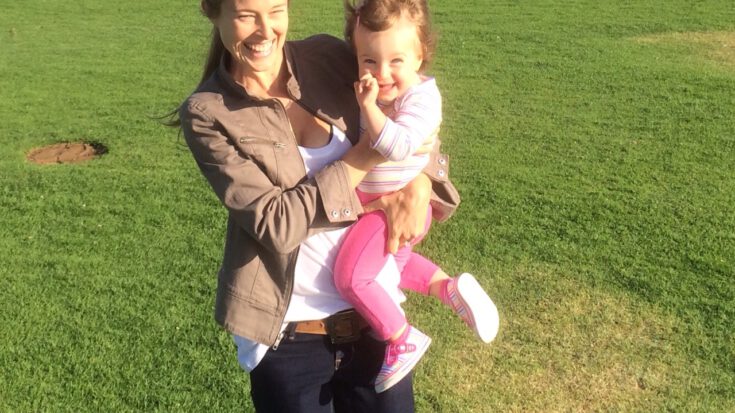There are three very common questions I get when clients are asking about Pilates and how to start:
1) Who are you trained by and what are the differences in Pilates schools?
2) What does it mean to be “certified” in Pilates?
3) How do I chose the right studio and instructor?
This post will address the reason there are various Pilates teacher training programs and how this applies to instructors today. This will serve as great background as we tackle the other two questions in upcoming posts!
Pilates was developed by Joseph Pilates in the early 1900’s. He emigrated to the United States from Germany in 1926, and met his wife, Clara, on the journey here. (You can read a more in depth history of Joseph Pilates here). They opened the first “Pilates” studio in New York City when they arrived, and just so happened to be neighbors with the New York City Ballet. He built quite the reputation for healing dancers’ injuries and improving their overall quality of movement.

Joseph Pilates never held an open “Pilates teacher training course” (he is thought to have directly certified only two instructors – Kathy Grant and Lolita San Miguel). He didn’t train students how to open their own studio or make money or bring in clients. He simply taught what he loved to people who wanted to learn and work hard.
When he passed away in 1967, he left no will and no instructions on how the Pilates work would carry on. This task was left to his wife and some of his most dedicated students. Romana Kryzanowska became director of the original Pilates Studio with Clara. Ron Fletcher, Carola Trier, Kathy Grant, Lolita San Miguel, Eve Gentry and Mary Bowen (among others) were all students of Joe and Clara who opened their own Pilates studios. These names are well known and respected in the Pilates industry and are considered the First Generation Teachers due to their direct education from Joseph Pilates.
Once Joe passed, each of these Pilates teachers went on to open their own studios and train other people to become Pilates instructors. They were able to pass on Joe’s direct instructions as they knew them, while also adding their own backgrounds and personalities. Mary Bowen was a Jungian analyst, Ron Fletcher was a Martha Graham dancer and was mentored by Yeichi Imura, and Carola Trier fled a Nazi holding camp in France to come to the US. Each one of these teachers respected what they had learned from Joe, while also adding bits and pieces of the world they knew and things they were passionate about.
Pilates continued to grow throughout the 1970’s and 1980’s, partly through the studios built by Joe’s students and others who were now being trained by those First Generation Teachers. By the time Pilates exploded in popularity in the 1990’s, there were thousands and thousands of people doing Pilates in the world, and they needed more and more instructors to teach them. Studios and teacher training programs continued to open, most being created by students with a direct line back to Joseph Pilates. Again, they kept with the original Pilates principles, while adding unique characteristics of the developers. Polestar was codeveloped by a physical therapist so it has a very respected Rehab program and The Pilates Training Center of Boulder trains instructors in the classical Pilates method. These, as well as BASI, Physical Mind and many others, are all amazing training programs. They all teach Pilates exercises and have the same names for those exercises and can communicate in the same dialogue. They all have similar principles and support the PMA. They just have different “personalities”.
I picture the Pilates industry as a huge family tree. At the top you have Joe and Clara Pilates. The next generation includes Romana and Eve and Kathy and all the First Generation instructors. Then the branches increase…and increase…and increase! There are thousands and thousands and thousands of us now. We each can trace our history back to a certain instructor or family of instructors, depending on our training, but ultimately, we all go back to Joseph Pilates. Like any family, you will have members with different personalities and characteristics, but we are all family. (Unfortunately, there are many training programs out there that call themselves Pilates and actually aren’t a part of this family tree at all. They have no direct line back to Joe and are simply using the name for marketing. We will get into this in our next two posts on this subject.)
So, now that you have a little background, let me tell you my training:

I went through Polestar Pilates’ Pilates training for rehab professionals and received my diploma from them in 2002. I took Stott Pilates’ mat Pilates teacher training course and received that diploma in 2007 (I was guest teaching in a Stott training facility at the time and the owner offered that I audit their mat teacher training course for experience in their specific method). I passed the Pilates Method Alliance Teacher Training test in 2009, which makes me a PMA Certified Pilates Teacher (PMA-CPT). In that time, I have also studied with and/or learned from Elizabeth Larkam, Brent Anderson and Pat Guyton, among many others in the Pilates industry. I love Pilates, but also do yoga, run, hike, teach barre and lift weights as part of my workout regime.
I tell you this not to throw out impressive names or credentials, but to show you a typical instructor’s resume who has been in the industry for a while. It’s multi-faceted and continues to grow! It hopefully has elements from different Pilates’ schools, continuing education workshops and other fitness modalities. The more I work and practice in this industry, the more I fall in love with it and want to learn even more. I continue to be a student of my fellow teachers, especially the generations before me. My teaching style incorporates traditional Pilates principles and exercises, contemporary ideas from current fitness trends and my background and experience as a physical therapist. I’m learning more and more about The Pilates Method from a classical point of view, and am enjoying adding that to my tool box. I want to respect and present everything I’ve learned with integrity, while also putting my own personal touches on what I teach. That is what I think you will hear from the instructors who want to do only the best for this industry. That’s what I hope for each of us carrying the torch for Joseph Pilates.



